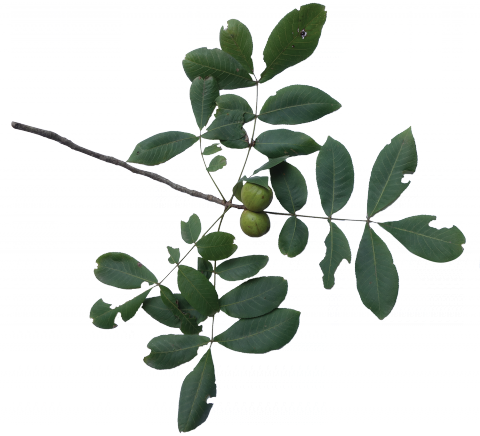
(Carya glabra)
The Walnut Family (Juglandaceae)
Tall tree with irregular crown, alternate, deciduous leaves with 5 to 7 leaflets and smooth gray bark on young trees turning to scaly ridges as the tree ages.
Habitat:
Dry slopes and ridges.
Interesting Facts:
Strong, elastic wood is used for tool handles, sports equipment and wagon wheels. The nut’s bitterness and small amount of meat make it less desirable for human consumption than other hickory species. It is host to the Luna, Funeral Dagger and Giant Regal moths.
Fruit:
1 - 2” long, thin husked, round nut with bitter flesh, ripening in early fall.
Flower:
Male: 2- 3” yellow-green catkins with three hanging from one stalk; Female: very short, in clusters on branch ends. Both bloom in spring.
Wildlife value:
Nuts are a valuable fall and winter food for large and small mammals, as well as several species of songbirds. Tree serves as cover for insects, birds and small mammals.
Bark
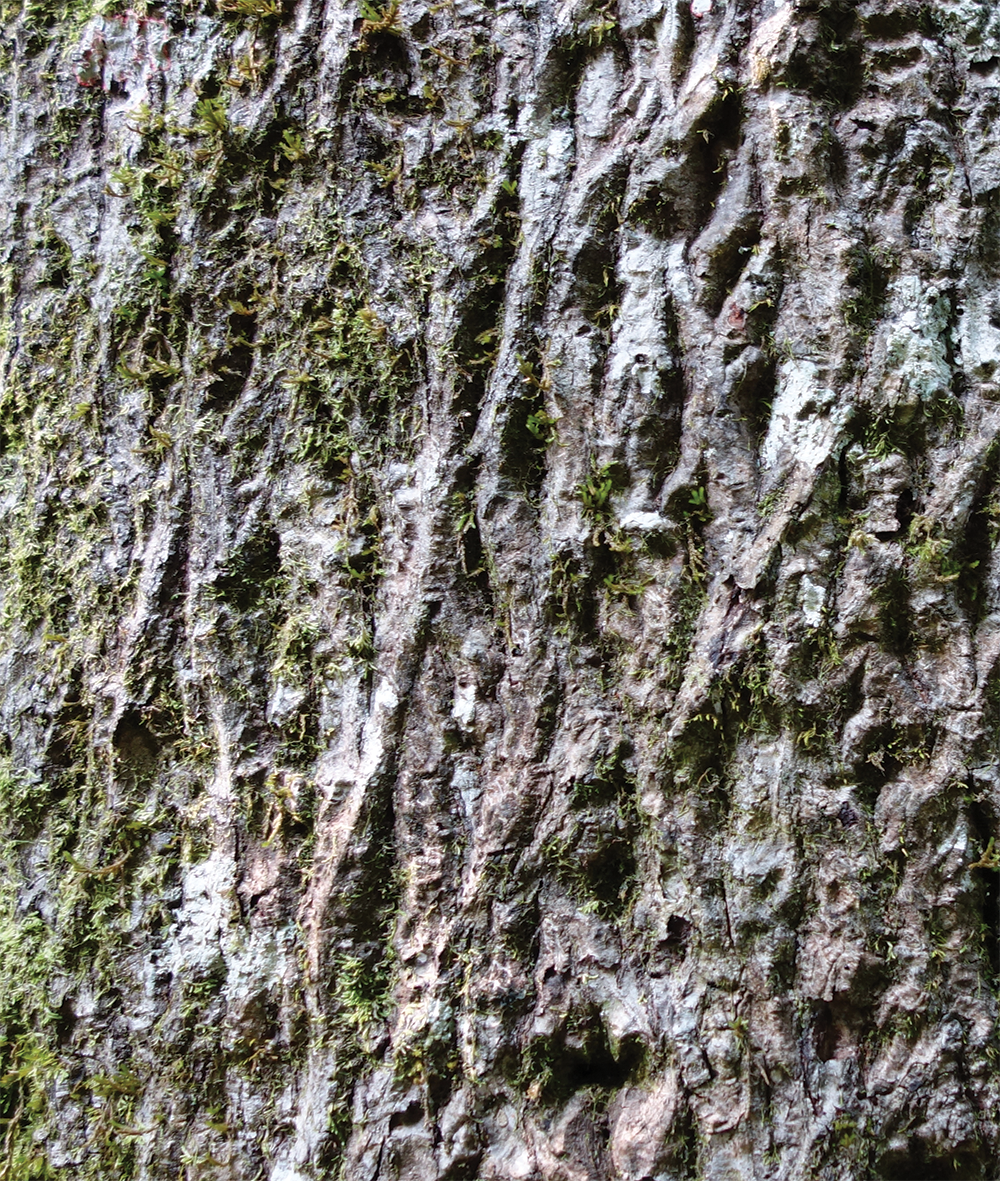
Fruit
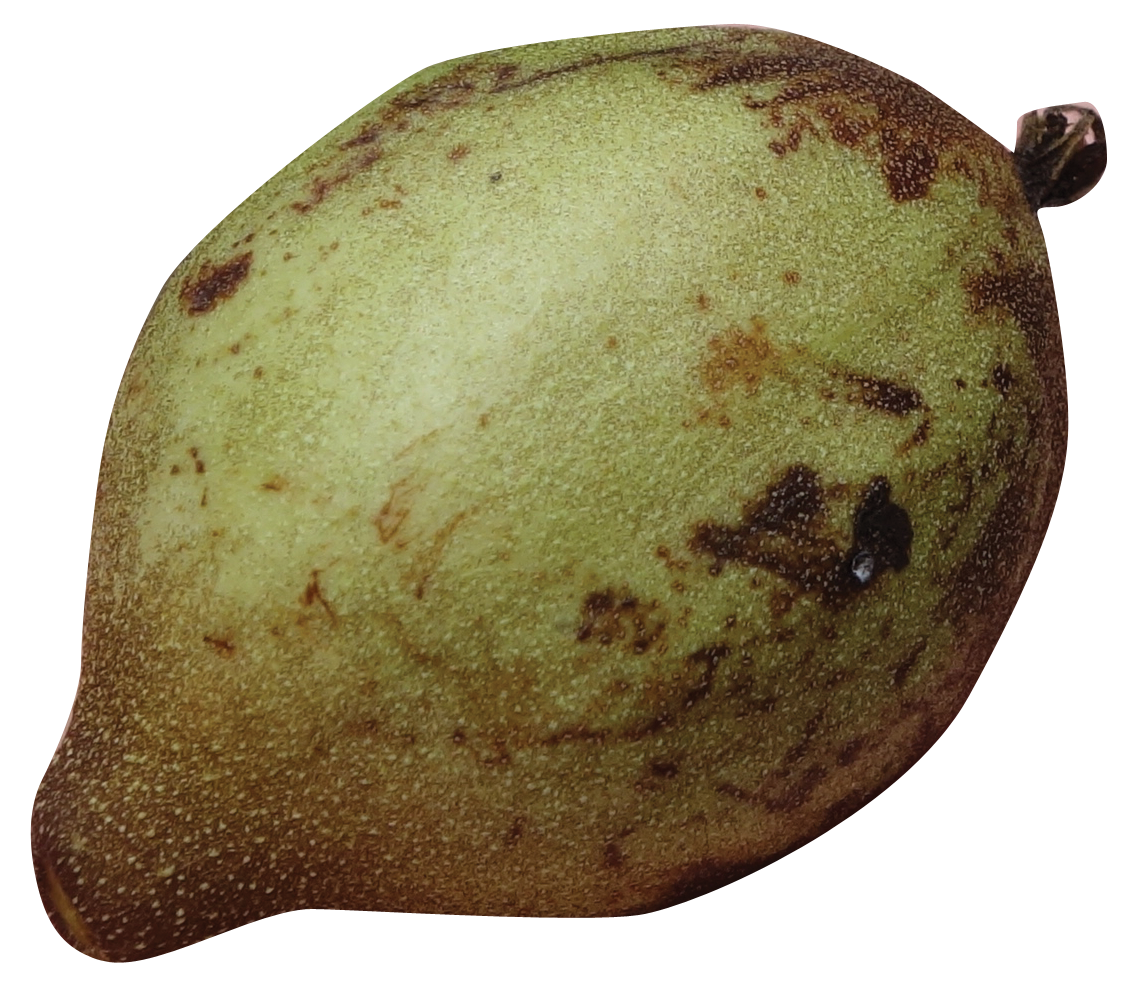
Leaf type:
Compound
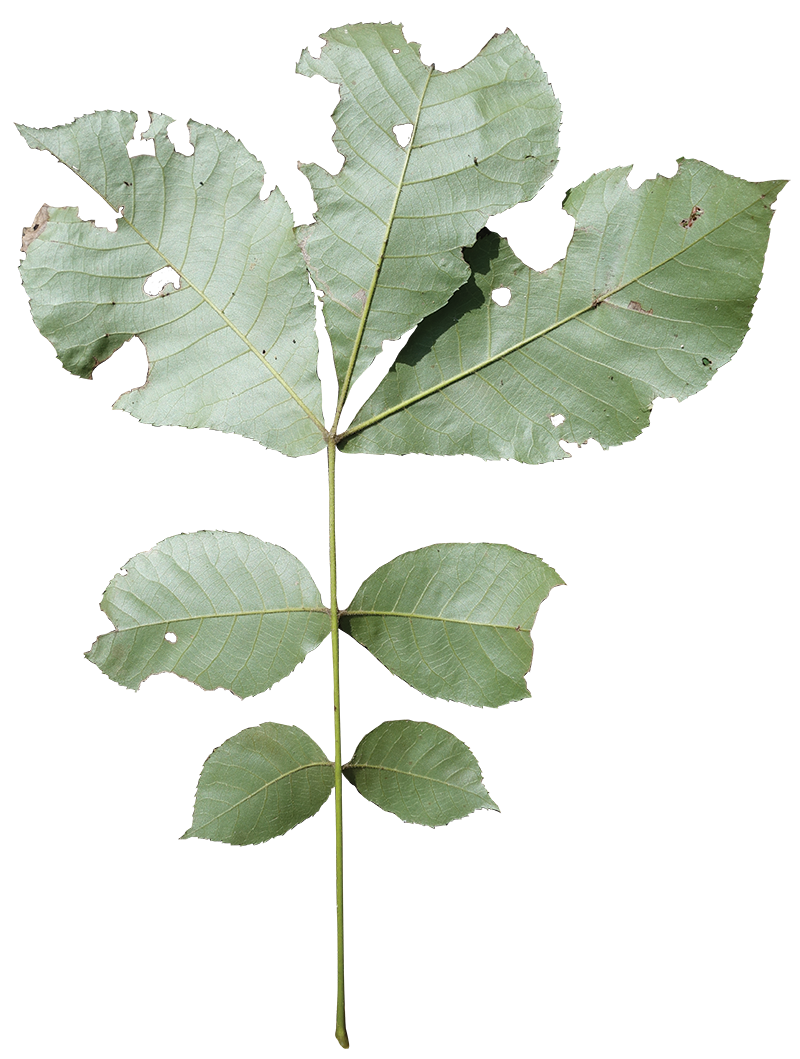
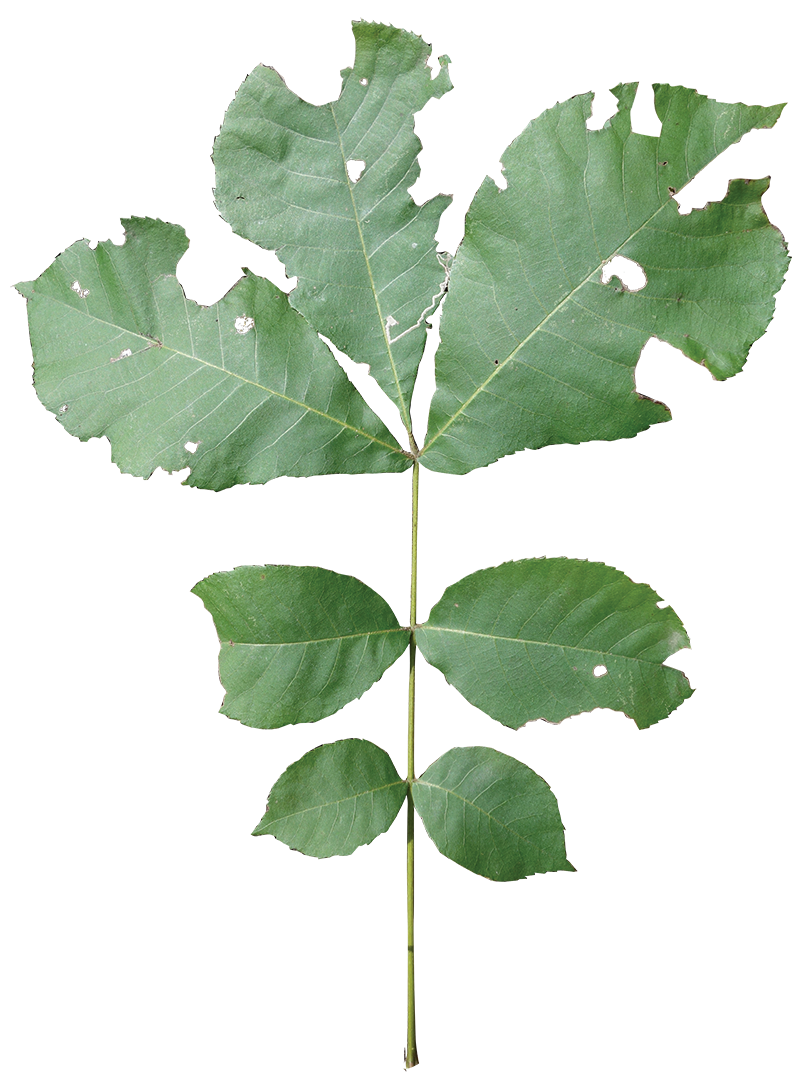
Tree dimensions:

Leaf length: 8.00-12.00 inches
Tree height: 50.00-100.00 feet
Where to find Pignut Hickory on the Louisiana State Arboretum Trails:
PAW - Pawpaw Loop Trail 6.0
Refer to our Live Map to locate this species and its interpretative signage on the trail system.
